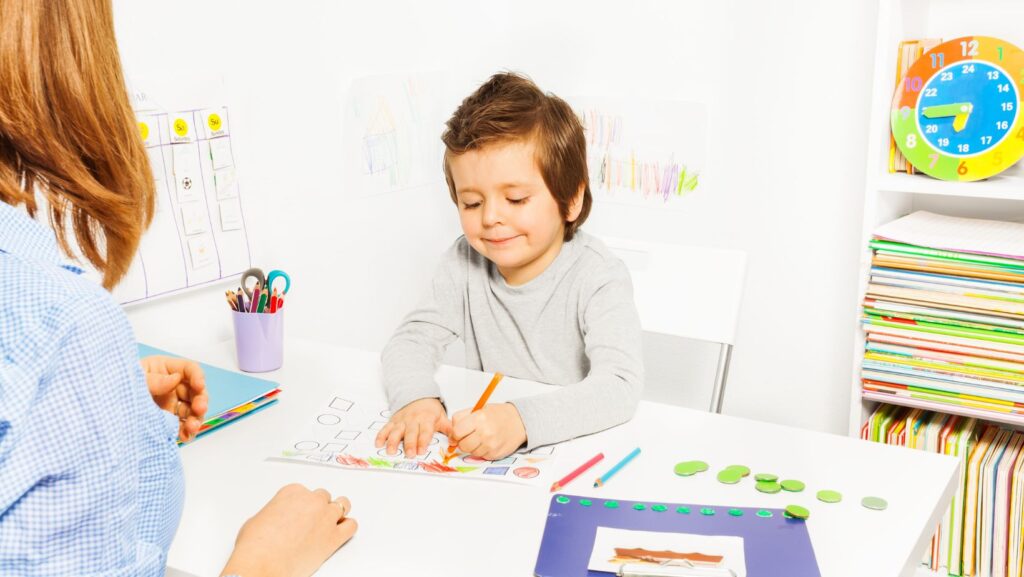
Creating an open and supportive school learning community is an extremely likely one of the most difficult tasks educators have today. All children bring varying learning needs with them, and there are some who bring behavioral or communication issues that complicate schooling for them. School-based Applied Behavior Analysis (ABA) services step into this picture. By utilizing science-based rules of learning and individualized behavioral interventions, ABA assists students in overcoming challenges, academic success, and learning life skills at school.
What Are School-Based ABA Services?
School-based ABA services provide the evidence-based practices of Applied Behavior Analysis to the educational environment. ABA is a research-based method of understanding and building up meaningful behaviors that occur daily. In the school environment, it includes helping students learn academic, social, communication, and emotional regulation skills.
ABA therapists and behavior analysts work with teachers, parents, and support staff at school to design individualized plans based on the particular needs of the child. Plans are not only designed to decrease problem behaviors, but to increase positive, goal-directed behavior like interacting, cooperating, and attending in the classroom,
Core Principles of ABA in Schools
In short, ABA is data-driven, evidence-based intervention. In the classroom, it addresses some of the most important principles:
- Positive Reinforcement:
ABA attempts to strengthen positive behavior such that it becomes even stronger. For the purpose of context, if a student practices raising his hand rather than shouting out, reinforcement or praise rewards such effort.
- Individualized Instruction:
Each child is unique, and ABA programs are designed to meet the strength, deficit, and rate of the child. Individualized intervention in this way makes it effective and powerful.
- Skill Building:
ABA is not just about reducing behavior—it’s about acquiring skills. Students learn communication, problem-solving, and self-management skills in addition to reaching long-term success.
Each step toward progress is tracked at all times with numbers, allowing for strategies to be adjusted and changes based on measurable outcomes.
Benefits of School-Based ABA Services
Having ABA services provided in schools provides students with an educated and supervised place where they can academically and socially flourish. Some of the most notable benefits are:
1. Increased Academic Achievement
A majority of the kids who receive ABA therapy can be trained to demonstrate more attention, interest, and motivation towards school. Through reducing problematic behavior and teaching self-regulation, ABA ensures healthy learning atmospheres. There is reduced distraction and increased focus towards students so that they can learn at their full potential in classrooms and attain maximums at school.
2. More Social Interaction
Social skills are what drive the growth of peer cooperation, friendship, and positive peer culture in the classroom. The students are taught to coexist with peers and teachers, to communicate, and to cultivate inclusion through ABA programs in school.
3. Enhanced Control of Emotions
They can struggle with frustration, anxiety, and disappointment. ABA educates them on how to manage and adapt their feelings, and kids learn to react less to setbacks and changes in the school day.
4. Positive Classroom Climate
As collaboration rises and challenging behavior declines, everyone in the class succeeds. Teachers are subsequently able to direct more time to instruction and less time to behavior management, and students experience a less stressful, more respectful classroom.
5. Educator and ABA Professional Collaboration
Another strength of ABA services in schools is collaboration between teachers, paraprofessionals, and behavior analysts. This translates to coordinated practice, the same objectives for all, and good communication which is beneficial to the development of a child.
6. Teachers and Staff Support
ABA practitioners prefer training and mentoring teachers and aides in order that they can be certified so that they can learn concepts about reinforcement and controlling behavior. It boosts school staff self-esteem and provides consistency across settings.
7. Long-Term Acquisition of Skills
Whereas brief intervention focuses on short-term mastery of skills, ABA is focused on long-term mastery of skills. Students master adaptive behaviors outside the classroom—such as following rules, working on time, or independent work skills—so they are ready for higher grades and life after school.
How School-Based ABA Services Work
School-based ABA services generally follow a structured and team-based process:
- Assessment:
A Board Certified Behavior Analyst (BCBA) applies strengths, deficits, and behavior pattern assessment of the student through direct observation, data collection, and communication with parents and teachers.
- Goal Setting:
Results of the assessment are applied in developing personalized goals. These can be academic engagement, communication, social interaction, or behavior regulation.
- Implementation:
ABA interventions are incorporated into the student’s daily life. Prompting, modeling, and reinforcement are applied in training and encouraging positive behavior.
- Monitoring and Adjustment:
Constant monitoring of progress, and feeds information back into any adjustment that is required. This keeps the intervention constantly in mode and to point with shifting student needs.
Regular ABA professionals, teachers, and parents’ meetings keep them all in sync with each other and ensure collectively shared success. All are together like hand in hand in providing the same plan at home and school.
The Broader Impact on School Communities
School-based ABA impacts not just the individual kids—the school community as a whole is enriched. When teachers are taught behavior management skills and are receiving support for the children on an ongoing basis, school as a whole is a better place to learn.
Classrooms are more inclusive, with all the students—behavioral challenged or learning differently—being able to succeed. Teachers are more effective in teaching diverse learning needs, increasing their teaching efficiency and job satisfaction
.
Parents themselves are also not exempt from the process. In-home reinforcement of ABA strategies provides students with a sense of continuity that accelerates progress. Academic and behavioral success is higher in schools that emphasize collaboration with families.
Why School-Based ABA Services Matter
The real objective of ABA school therapy is not being a controller but facilitating students to reach their full potential. ABA makes children independent, assertive, and socially active through the acquisition of meaningful and functional skills.
This, in the modern multicultural classroom, is facilitating assimilation and equality so that the children regardless of their needs are getting their required assistance. From keeping a child on task by time lesson in mathematics, becoming friends, or transitioning with feelings, ABA is measuring its impact throughout the school day.
Seeking ABA therapy services Maryland? Our evidence-based, customized interventions engage children to learn, succeed, and thrive in school and life.
Conclusion
ABA school services are a winning combination of science and education. Not only do they fix behavior problems, but they also assist in personal growth, academic achievement, and emotional health.
By emphasizing student-specific strategies, teamwork, and ongoing support, ABA therapy turns classrooms into communities where all children can learn, grow, and succeed. The impact isn’t just improved behavior—its impact makes more, better schools where all children flourish.












